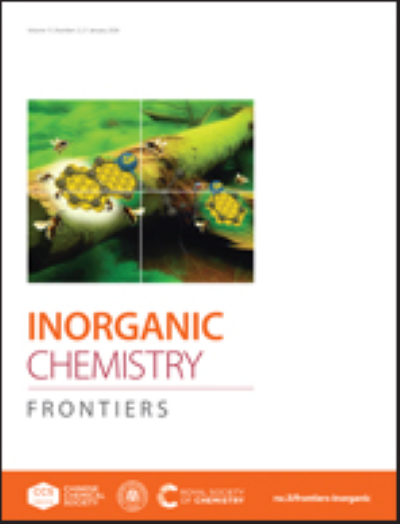Al-alkyl Borate Salt Cocatalysts for Olefin Polymerization: Exploration of N-donor Ligand Variations
IF 6.1
1区 化学
Q1 CHEMISTRY, INORGANIC & NUCLEAR
引用次数: 0
Abstract
The well-defined Al-alkyl borate (AAB) salt {[iBu2(PhNMe2)Al]2(μ-H)}+[B(C6F5)4]- (AlHAl) has been recently identified as a promising “complete” cocatalyst for olefin polymerization. Herein, we explore structural variations of AlHAl obtained by replacing the PhNMe2 (DMA) donor with a variety of anilines, amines, and N-heterocycles. Of the 18 investigated N-donors, twelve provided stable AAB salts; those were tested as cocatalyst in ethylene/1-hexene copolymerization with a archetypical metallocene catalyst. In the other six cases, occurring side reactions were thoroughly analyzed by NMR spectroscopy. For instance, addition of an o-Me substituent on the DMA ligand triggers C–H activation leading to five-membered cyclometalated species; increasing steric bulk directly at the N-donor atom leads to tricoordinate mononuclear Al-alkyl cations, which could be isolated, fully characterized and tested in polymerization when using PhNEt2 (DEA). Cocatalytic performance of aniline- and amine-based systems varies only marginally with respect to the benchmark AlHAl_DMA. N-heterocyclic AAB salts perform worse; only the two least electron donating donors, namely difluoropyridine (Py-3,5-F) and quinoline (QUI) provide noticeable productivity. A simple quantitative-structure activity relationship, correlating steric bulk and stabilizing ability of the N-donor to productivity (R2 = 0.88), has been identified.用于烯烃聚合的铝烷基硼酸盐助催化剂:探索 N-供体配体的变化
定义明确的硼酸铝烷基(AAB)盐{[iBu2(PhNMe2)Al]2(μ-H)}+[B(C6F5)4]- (AlHAl)最近被确定为一种很有前途的烯烃聚合 "完全 "助催化剂。在此,我们探讨了通过用各种苯胺、胺和 N-杂环取代 PhNMe2(DMA)供体而获得的 AlHAl 的结构变化。在研究的 18 种 N-供体中,有 12 种提供了稳定的 AAB 盐;这些盐在乙烯/1-己烯共聚过程中与典型的茂金属催化剂一起作为共催化剂进行了测试。在其他六种情况下,通过核磁共振光谱对发生的副反应进行了深入分析。例如,在 DMA 配体上添加 o-Me 取代基会引发 C-H 活化,从而产生五元环甲基化物种;直接在 N-供体原子上增加立体体积会产生三配位单核铝烷基阳离子,在使用 PhNEt2 (DEA) 进行聚合反应时,可分离出这些阳离子并对其进行全面表征和测试。与基准 AlHAl_DMA 相比,苯胺基和胺基体系的催化性能差异很小。N-heterocyclic AAB 盐的催化性能较差;只有二氟吡啶(Py-3,5-F)和喹啉(QUI)这两种电子奉献最少的供体具有明显的催化活性。我们发现了一种简单的定量-结构活性关系,它将 N-供体的立体体积和稳定能力与生产率联系起来(R2 = 0.88)。
本文章由计算机程序翻译,如有差异,请以英文原文为准。
求助全文
约1分钟内获得全文
求助全文
来源期刊

Inorganic Chemistry Frontiers
CHEMISTRY, INORGANIC & NUCLEAR-
CiteScore
10.40
自引率
7.10%
发文量
587
审稿时长
1.2 months
期刊介绍:
The international, high quality journal for interdisciplinary research between inorganic chemistry and related subjects
 求助内容:
求助内容: 应助结果提醒方式:
应助结果提醒方式:


